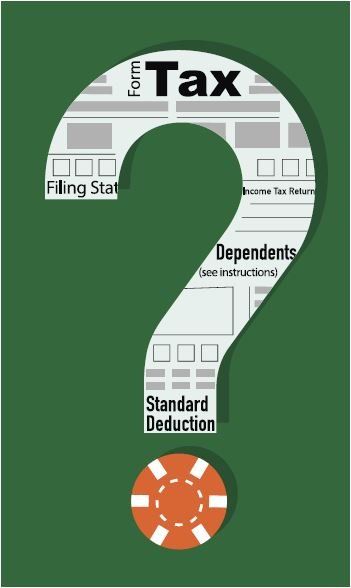Autumn Newsletter 2022
Optional download pdf: Autumn Newsletter 2022 →
Leading Article
Tax uncertainty in an uncertain world
Our new Prime Minister has a lot on her plate. In addition to all the uncertainty caused by high inflation and energy costs, we now have tax uncertainty, as we wait to see exactly what changes the new government will make. They are committed to reversing this year’s National Insurance increases and the planned corporation tax increases for larger companies. Perhaps such tax cuts will also necessitate tax rises in other areas, as the government’s cost of borrowing is rising along with interest rates.
New help with energy costs has been announced already. A typical household will save an average of £1,000 a year on their energy bills, compared to what they might otherwise be, under a new two-year ‘Energy Price Guarantee’. The green levy on energy bills being temporarily removed produces around £150 p.a. of this saving.
Businesses and public sector organisations will see equivalent support over this winter. This capping of prices will help to get inflation under control, but is being paid for by a massive increase in government borrowing. It will be interesting to see what effect this has on interest rates and taxes going forward. We should know more details of the government’s plans after the ‘emergency Budget’ that we have been promised.
We will keep you up to date with any tax changes announced over forthcoming weeks, but in this newsletter we cover topics that we can talk about with certainty. These include upcoming changes for unincorporated businesses and those transferring assets on a divorce, common VAT errors and maximising tax relief for charitable donations.
There is lots to think about, so please contact us if you would like to discuss any of these issues with us.
GENERAL TAX
Declare your state pension correctly
HMRC urges you to declare accurately every figure on your tax return, but the Department for Work and Pensions (DWP), which pays state retirement pensions, doesn’t make this easy.
Payers of occupational pensions issue a P60 certificate every year to show exactly what amount of pension has been paid and taxed during the tax year, but the DWP doesn’t do this.
The state pension is taxable, but the DWP doesn’t issue a P60 certificate. Instead, the DWP will send you a letter before the beginning of the tax year, which tells you the weekly amount of state pension you are entitled to at the new rate for the year.
The annual increase in value of the state pension occurs on the day after the weekly payment day in the first full week on the tax year, not on the first day of the tax year. To calculate the amount of state pension you should declare on your return, take one or two weeks at the old rate plus 50 or 51 weeks at the increased rate, depending on the day of the week your pension is paid. It is easy to get this wrong!
Note that this may not match the cash amount you actually receive during the tax year. The state pension is paid every four weekly instalments, not monthly, so there will be 13 payments in a tax year, or 14 if the first pensions pay day falls on 6 April.
We can help you make sure that your pension income is correctly declared for tax purposes.
Missing UK property return
If you make a capital gain by selling a residential property in the UK, you need to report that disposal to HMRC twice, on:
- A UK Property Return (normally online) within 60 days of the completion date; and
- A Self-assessment tax return (SATR) by 31 January after 5 April following the exchange date.
These two systems of Capital Gains Tax (CGT) reporting are completely separate. Your best estimate of the CGT due on the sale must also be paid within 60 days of the completion date. When you complete your SATR you must submit all the same information, plus details of any other gains or losses you have made in that same tax year. You may then have extra CGT to pay or due a refund. Note, however, that if you have no other income or gains to report for the year, you will not need to file a SATR if you have submitted a Property Return already.
If you have not completed the UK Property Return to report your gain by the time your annual SATR is due, you must complete the UK Property Return first. The HMRC system will not allow you to submit the UK Property Return online after your SA return has been accepted, so you will have to submit the UK Property Return on paper – which is a pain. There will also be penalties to pay for submitting a late UK Property Return.
If you get an error message when trying to access the UK Property Return, it may be because your home address is not correctly recorded within HMRC systems. Check your online personal tax account has the correct postcode entered in the right field.
We are here to help you navigate what can sometimes seem to be a crazy tax system and to help you avoid tax penalties.

Capital gains tax changes on divorce
When couples divorce, there is inevitably some division of assets. Jointly-owned assets may have to be sold, or a share in an asset or business transferred to the ex-partner.
These arrangements can take a long time to agree, but currently the Capital Gains Tax (CGT) rules only allow assets to be transferred between a married couple or civil partners on a tax-neutral basis while they are living together, or within the same tax year as their separation. This can create a CGT bill at a difficult time for the individuals concerned when assets are transferred after this deadline.
The Government has at last acted to help divorcing couples split assets without incurring unnecessary tax bills. From 6 April 2023 couples will have three years from the end of the tax year in which they separate to transfer assets tax-neutrally, so that no CGT liability arises at the time. In any event, if the assets are transferred as part of the formal divorce agreement, there will be no assessable gain on that transfer.
The new rules only apply to assets transferred from 6 April 2023, so if you are in the middle of divorcing and expect any asset swap to take some time, it may be better to finalise things after 5 April next year.
Please talk to us if you are going through a divorce as there may be other tax issues to consider.
EMPLOYEE TAX
Swapping salary for an EV
Taking a company-provided electric car can provide you with some real savings in running costs and road tax.
You will be taxed on the benefit of driving the electric car, calculated at 2% of its list price, but this is low compared to company cars that run on purely petrol or diesel, where the annual benefit is 15% to 37% of list price. There is no taxable benefit when you use the company’s electricity to charge the car at work. If you need to charge the vehicle at a public charging point your employer can reimburse you for this cost, with no extra tax charge, but you should keep records of the amounts claimed.
Even if you give up some salary in order to take the electric car, you will be taxed on the benefit of the car, not the salary you gave up; this doesn’t apply if you swap salary for many other benefits.
The company can claim a full tax deduction for the cost of purchasing an electric car in the year of acquisition. If the vehicle is leased, the leasing costs are also fully deductible for an electric or low emission car. No VAT is deductible on the purchase of a company car, but 50% of the VAT on lease payments is normally recoverable.
As long as your total remuneration package reflects the work you do for the business, the costs associated with the provision of the electric car (e.g. insurance), plus your salary, are tax deductible for the company.
Talk to us about the various tax breaks available on electric vehicles if you are purchasing or leasing company cars.
Working at home deductions
Many employees who worked at home during the COVID-19 pandemic found they preferred that arrangement to commuting every day.
Employers can continue to pay their employees a tax-free allowance of £6 per week (£26 per month) if there is a homeworking arrangement in place with those employees. The employer may also reimburse larger amounts to employees who can show they incur variable costs (such as heating) in excess of £6 per week by working at home.
Employees who do not receive a homeworking allowance from their employer, despite being required to work at home, can claim a tax deduction of £6 per week from HMRC. However, a homeworking agreement must be in place, rather that it being an optional arrangement.
Where an employee can show that the extra costs of working at home are higher than £6 per week, they can claim a deduction from HMRC for the actual additional costs. With electricity and gas bills climbing upwards, the costs of heating a room to work in may well be more than £6 per week. HMRC may ask to see proof of those costs, so keep the evidence in the form of bills.
The claim for the home working deduction can be made on the employee’s self-assessment tax return, if they normally complete one, or by using the online P87 form. Where a similar claim has been made in an earlier year, the taxpayer can renew that claim by phoning HMRC.
We can help you calculate the additional costs of working at home and how much you are able to deduct for tax purposes.
Get your Gift Aid claim right
If you pay income tax at 40% or more, you can get some extra tax relief from your charitable donations by ticking the ‘Gift Aid’ box. The additional tax relief, above 20%, can be claimed on your tax return for the year in which the donation was made.
Alternatively, you can elect to treat some or all of your Gift Aid donations as if they were paid in the tax year immediately before the year in which the gifts were made. This gives you the additional tax relief a year earlier, which is particularly beneficial if your tax rate was higher in that earlier year. The carry-back election must be made on your tax return for that earlier tax year when it is first submitted; you cannot make a carry-back claim by amending a tax return already filed.
It is essential that any Gift Aid claims are carefully checked before the tax return is finalised. Where a mistake is made in the declared donations, any correction will automatically be treated as an amended tax return, so the original Gift Aid figures will have to stand.
If you plan to make a large charitable gift, after say the sale of your business, discuss the timing with us.

New PAYE schemes
There are circumstances where you may want to run several payrolls and thus several PAYE schemes within a single business. For example, the business may have:
- Some employees paid weekly or bi-weekly, with others paid monthly
- Recently merged businesses that have separate payrolls paid at different times
- Branches with different pay structures
- Directors’ pay, which needs to be confidential.
Employers can now apply to have a separate PAYE scheme operational with only a month’s notice.
You need to apply on the P350 form before the beginning of the tax month that precedes the month from which the new PAYE scheme is to apply. For example, if you want a new PAYE scheme to operate from 6 November 2022, the form P350 needs to be submitted to HMRC before 6 October 2022. We can help you apply for a new PAYE scheme.
If you change your mind, you can cancel the new PAYE scheme at any time before the beginning of the tax month when it was due to come into effect.
Remember that you can only claim one annual Employment Allowance (which gives exemption from employers’ Class 1 National Insurance Contributions (NIC) and is now worth up to £5,000) regardless of how many PAYE schemes you operate. You need to nominate the PAYE scheme for which you want to claim the allowance. If the allowance is not fully used on that PAYE scheme, you can claim the remaining balance against the employer’s Class 1 NIC paid on a different PAYE scheme after the end of the tax year.
BUSINESS TAX
A Change Is Gonna Come
Most unincorporated businesses that do not have a 31 March or 5 April year-end should be considering changing their accounting date before 2024/25, when the new ‘tax year’ basis of assessing profits will be in place. If they do not make such a change, their future tax returns are going to require the apportionment of profits from two different accounting periods, probably with estimated figures (that will require subsequent adjustment) being used from the latter period.
2023/24 is a transition year, where potentially up to 23 months’ profits (if the current year-end date is 30 April) may be assessable. To mitigate the possibly significant extra tax liability that could result in the year, various special rules apply, including the spreading of these additional ‘transition profits’ over five years.
For those affected by the change, there is much to ponder before the new rules come in, including:
- Whether to change accounting date
- In which tax year to change accounting date
- The methodology of changing accounting date (one long period of account or two separate periods, one of 12 months and a shorter one)
- The timing of any capital expenditure and how this will impact on the profits assessable
- Budgeting for the extra tax liabilities that the new rules will produce in the transition year
- Recognising that, going forward, there will be a smaller delay between profits being earned and the tax on those profits being due.
If your unincorporated business does not currently have a 31 March or 5 April year-end, make sure you discuss these issues with us. Although the new rules may still seem some way off, there is lots of planning to do in advance of the changes coming in.

Loans to employees
Employers may provide small or modest loans to individual employees, at low or zero interest, to help with one-off costs such as a car repair, travel season ticket, or perhaps a gas bill.
The loan needs to be properly documented with clear repayment terms. Where the total amount of loans made by the employer to the employee doesn’t exceed £10,000 at any point in the tax year, there is no benefit-in-kind to declare. In other cases, a benefit will have to be declared on the annual P11D form.
Additionally, loans to persons connected with the company (e.g. director-shareholders) need to be declared in the company’s tax return. The £10,000 threshold mentioned above is irrelevant for these purposes. The company must also pay tax on any loan balance still outstanding more than nine months after the end of the accounting period in which the loan was provided. If the loan is written-off, it will be taxed as a dividend received by the director-shareholder, but oddly national insurance is usually due!
We can help you calculate any tax charges connected with loans provided to employees or directors.
Travelling to work
Some workers are finding it difficult to afford the fuel or bus/train fare to travel to work. Employers may be tempted to help out by reimbursing those travel expenses.
Unfortunately, the journey between an employee’s home and their permanent work place is treated by HMRC as ordinary commuting. If the employer meets those travel costs for the employee, the payment must be taxed as salary under PAYE.
A tax-free mileage allowance (up to 45p per mile), or reimbursed expenses, can be paid where the employee travels to a temporary workplace in their own vehicle. This is somewhere the employee goes to perform a task of limited duration, or for some other temporary purpose.
An employee can have two or more permanent workplaces, eg both at their home and at the company’s office. If the individual is required to attend the office for certain periods, say one day a week, the office is also a permanent workplace.
Where an employee is based at home, as set out in their employment contract, but they are required to attend the office for specific meetings - the travel to the office for those meetings should be tax deductible, so the employer can reimburse those travel costs tax-free.
Where the place the employee performs their duties has changed, the employment contract needs to be amended to make it crystal clear where the new permanent workplace for the employee is and whether the employee has two permanent workplaces.
We can help you design tax efficient ways to help your employees meet the costs of getting to work.
R&D claims take longer
Claiming the payable tax credit for research and development (R&D) costs can be very useful for small companies, but HMRC are aware that there are many invalid and inflated claims in this area.
From June 2022 HMRC has been making additional checks on each R&D claim, which means the process takes up to 40 days. If you are worried that your claim has been overlooked, you can check your company’s online business tax account to find out the status of the claim.
To speed up new R&D claims, HMRC will want to see an R&D report submitted alongside the CT600 form.
From April 2023 the rules are changing, such that R&D claims cannot cover expenses incurred on subcontractors located outside the UK. The R&D report will also be mandatory; currently it is optional.
Companies that have not made an R&D claim before will have to tell HMRC, within six months of their accounting period-end, of their intention to make a claim.
Let’s talk about whether you could be eligible to claim under the small company R&D scheme.
Don’t fiddle your till sales
Nearly all retail and wholesale traders use electronic tills. Sales records can be manipulated through an electronic till either at the point of sale, or later, to suppress certain sales, while leaving a credible and apparently complete audit trail. This is called electronic sales suppression (ESS).
Programming a till to suppress sales amounts to tax evasion and HMRC are alive to such tricks.
HMRC is initially going after the producers and promoters of till software that can be used for ESS. Once it finds an ESS software distributer, it will try to track down all the businesses that bought that software.
If HMRC find you have purchased ESS-enabling tools, it will issue you with a notice to remove the software within 30 days. If you ignore that notice, HMRC can impose a penalty of up to £50,000.
When you are upgrading your till, check out the credentials of the supplier. If you have been operating ESS, you need to come clean and disclose the understated income.
We can guide you through the mechanics of making a disclosure to HMRC. We can also help you avoid these high penalties by checking the authenticity of your till software.

Submit RTI returns on time
All employers know they need to file their Full Payment Submission (FPS) under Real-Time Information (RTI) on or before the day they pay their employees. If the FPS is more than three days late, HMRC will firstly send an education letter to the employer, then a penalty notice if there is a second late return.
If you submit your FPS before the beginning of the tax period in which the employees are due to be paid, this can also cause problems.
Although each FPS return includes the tax period to which the return relates, HMRC‘s computer apparently can’t read that date and process the return correctly.
If the HMRC computer can’t find an FPS submitted in the period to which it relates (or shortly afterwards), it will assume the return is missing and issue an automatic penalty.
The HMRC-approved software (PAYE Basic Tools) permits employers to submit RTI returns early, without warning that this means you may incur a penalty!
If you receive a penalty for submitting your FPS late, but you think it was on time, please contact us without delay.
We can help you appeal against any incorrect penalties.
Top five VAT mistakes
VAT can trip you up, with expensive consequences. Here are five situations where it is easy to get the VAT treatment wrong.
- Services purchased from abroad (e.g. online advertising from a business based in Dublin) won’t show UK VAT. But you do need to calculate the VAT and include it on your VAT return in boxes 1 and 4, with the net amount of the invoice included in boxes 6 and 7. This is referred to as a ‘reverse charge’ situation.
- If you don’t have a valid VAT invoice, you should not reclaim VAT on the purchase. You can sometimes use alternative evidence, such as a supplier statement, but HMRC can refuse to accept this. Chase up any missing invoices before you submit your VAT return.
- VAT can’t be claimed on entertainment costs (other than staff entertaining). Taking a customer to lunch is business entertaining, so you can’t reclaim the VAT on that meal. HMRC regard most jollies, such as tickets to sporting events, as entertainment. There is a limited exemption if your customer is not based in the UK.
- When you take a deposit from a customer on accepting their order, you have to account for the VAT at that point, and not wait until you have issued a VAT invoice for the full amount due.
- When importing goods, be sure to retain the C79 certificate, as this will show the VAT that can be reclaimed. You also need to download your postponed import VAT statements every month through your customs declaration service (CDS) account.
Please ask us to clarify any issues about VAT. It’s better to ask than to get it wrong!
How to avoid MTD VAT Penalties
All VAT-registered businesses are now required to file their VAT returns using MTD-compatible software and to keep their VAT records in a digital format. This applies from the start of the first VAT period for newly registered businesses.
The old VAT portal, which allowed you to type the VAT return figures directly into the online form, will be closed on 31 October. If you do submit your VAT return using the old portal before it closes, you may receive a penalty of between £100 and £400 (dependant upon turnover) for submitting the VAT return in the wrong manner.
A failure to keep digital records will only be discovered if HMRC inspects your VAT records, as the MTD system doesn’t require you to submit the underlying records to HMRC. However, don’t risk incurring the penalty for not keeping digital records, as it can amount to £15 per day of the failure.
If you are late submitting your VAT return or paying the VAT due, you will receive a surcharge on the second or third late submission or payment, depending on the business turnover. This surcharge increases on every subsequent offence, increasing from 2% to 15% of the outstanding VAT.
From 2023 the VAT surcharge system will be replaced with a points-based system for late returns. This allows up to three returns to be late with no penalty, but the fourth and any subsequent late filings will each attract a £200 penalty. The automatic penalties stop if no returns are late for 12 months.
Please talk to us if you need assistance in submitting your VAT return on time.
This newsletter is written for the benefit of our clients. Further Advice should be obtained before any action is taken.


